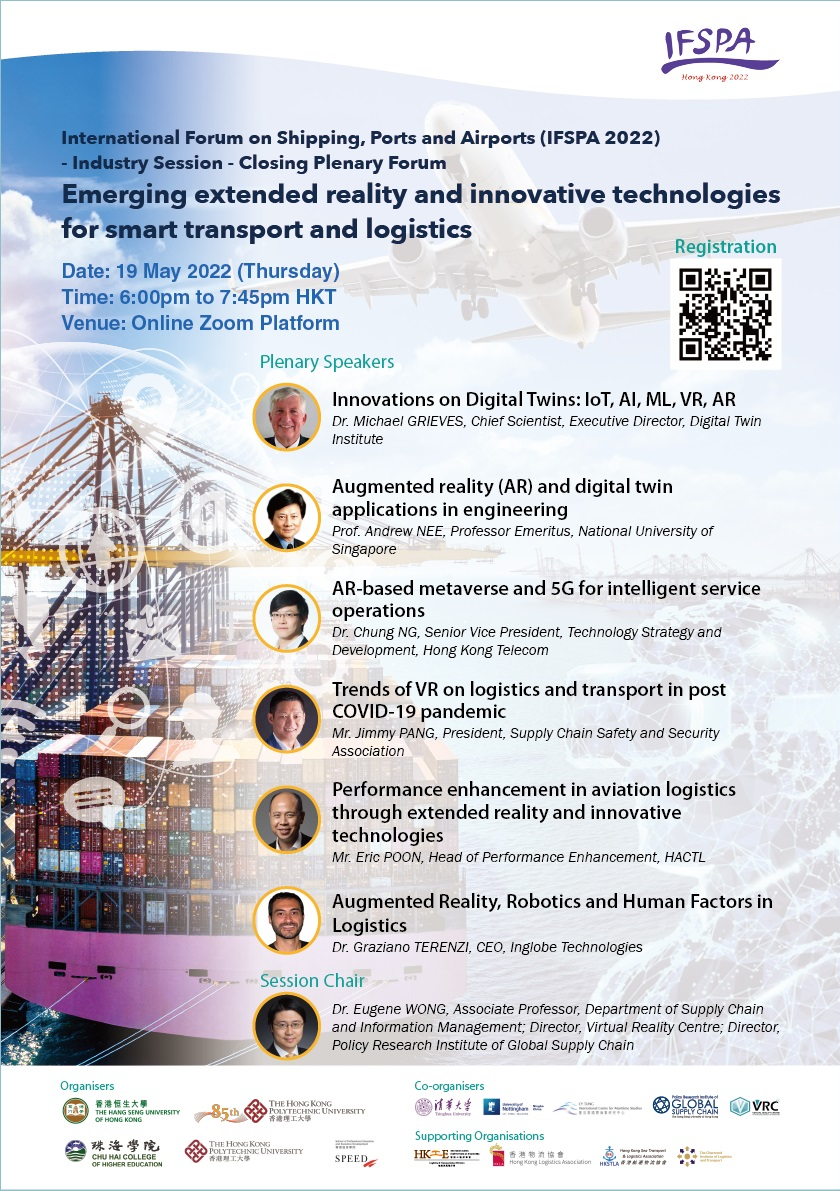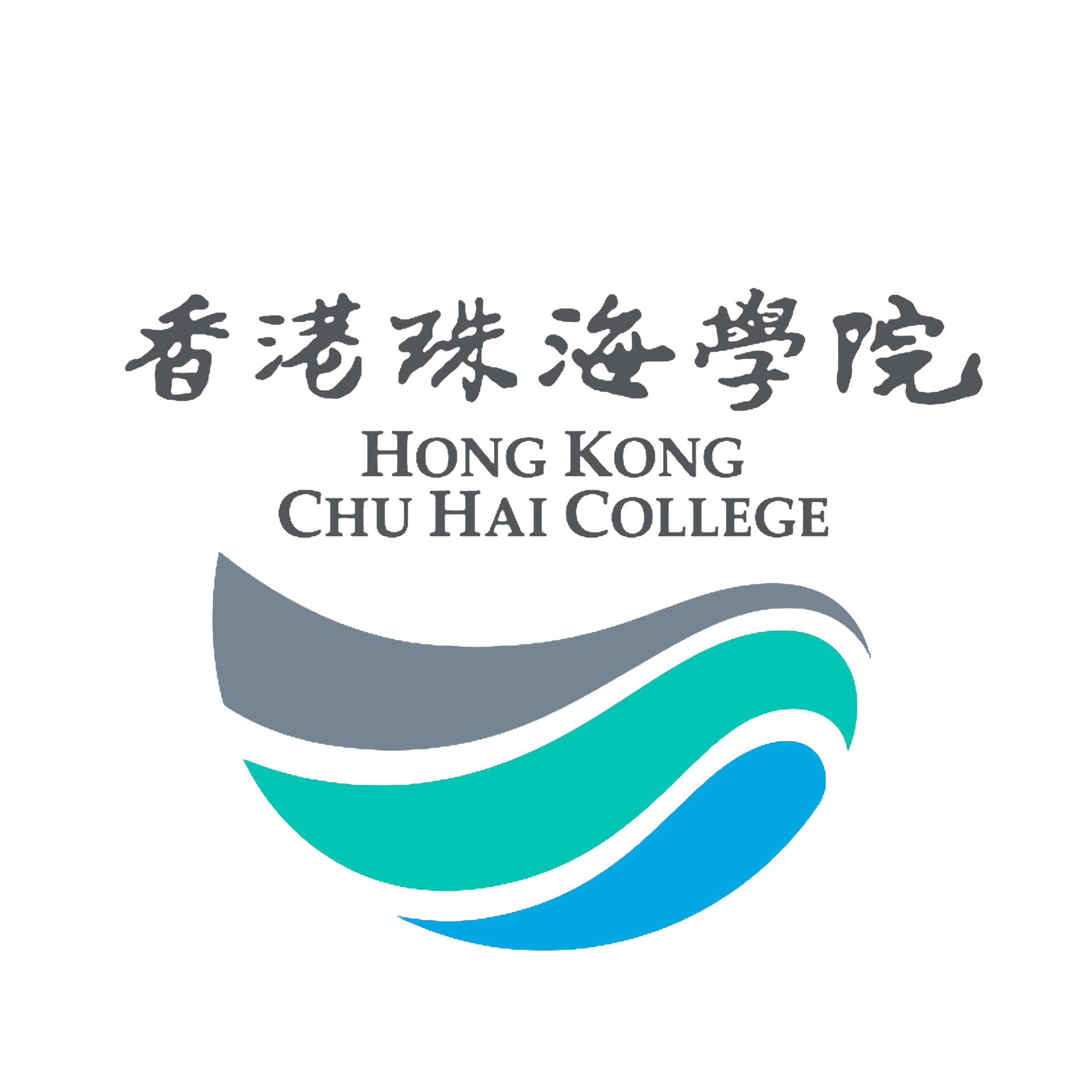(SEP 2021) Prof. Wai Lun LO, has research collaboration with Dr. Eugene Yin Cheung Wong (Associate Professor, SCM Dept., Hang Seng University of Hong Kong) in 2021 and Dr. Wong and Prof. LO have successfully got research funding for the following project. It is expected that the project will start in Jan 2022.
Extended Reality on Smart Transport and Logistics: Embracing Innovative Theories and Technologies for Enhancing Operational Resilience and Efficiency
Dr. Eugene Y.C.Wong (PI), Associate Professor, SCM dept., HSUHK
Prof. Wai Lun LO (Co-PI), Head of CS dept., Associate Dean FSE, CHCHE
Dr. LAU Yui-yip (Co-PI), Lecturer, School of Professional Education and Executive Development (SPEED), HKPolyU
Dr. Daniel MO (Co-I), Associate Professor, SCM dept., HSUHK
Dr BAI Xiwen (Co-I), Assistant Professor, Dept. of Industrial Engineering, Tsinghua University
Dr. Byron LEE (Co-I), Chairman Hong Kong Sea Transport and Logistics Association
Prof. Eugene CHNG (Co-I), Professor Director, NVIDIA JointLab on Mixed Reality, NVIDIA Technology Centre, University of Nottingham Ningbo China
Research Grant Committee, Hong Kong, Inter-Institutional Development Scheme (IIDS)
12 months, HK$ 544,548, UGC/IIDS14/B01/21
Project Summary
The rapid adoption of extended reality (ER) in the worldwide logistics and transport sector has created an urgent need for technological advancement and research development to provide the solutions and support required in daily operations. ER refers to all real-and-virtual combined environments and human-machine interactions generated by immersive technologies like Virtual Reality (VR), Augmented Reality (AR) and Mixed Reality (MR). The recent shift from operations sites to working from home due to the pandemic, strikes and other incidents has accelerated the need to develop VR technologies in industrial operations. Research on ER and its integration with other advanced technologies, including big data analytics, immersive digital twin systems, the Internet of Things (IoT) and artificial intelligence (AI), has been actively carried out in manufacturing and engineering industries, but few studies can be found in the transport and logistics sector. Developed countries, such as the United States and the nations in Europe, have already devoted research and development to these areas, e.g. remote operation of unmanned surface vessels via VR, vessel navigation systems with integration of AR, automatic identification system and global positioning system, digital twin systems with VR and AR, etc. There are also ports exploring the integration of AI, 5G and digital twin systems. MR technologies have also been used as tools for professional competency of sea transport professionals, e.g. aviation ground services VR training in the International Air Transport Association (IATA).

The promotion and support of Hong Kong as an international transport and logistics hub with high-value-added services and an international innovation and technology hub are key items in the recent Policy Address. ER has been identified as an important technological advancement in transport and logistics operations that will undoubtedly contribute to maintaining the productivity and competitiveness of Hong Kong’s maritime and aviation sector. Despite the high demand for research on this subject, few studies have been carried out in Hong Kong and nearby cities in the Greater Bay Area due to insufficient expertise and research facilities. More resources must be devoted to embracing new theories and innovative technologies in this area because Hong Kong currently lags behind many other countries with advanced ER technologies. Students in Hong Kong who are studying supply chains, freight transport and logistics have few state-of-the-art teaching and learning materials that focus specifically on innovative technologies in maritime and aviation, and even fewer address ER and its integration with digital twins, IoT, AI and big data analytics. Research and teaching platforms for innovative technologies on transport and logistics would thus be valuable both for students and for the industrial practitioners who support daily cargo operations and sustain the competitiveness of sea and air cargo throughput in Hong Kong. In view of these needs, this project will organise a research workshop and international forum tailored for logistics practitioners to discuss innovations in ER for maritime and aviation logistics. The participants of these events will explore both local and overseas case studies, which will be compiled and shared on an online learning platform and in a reference book. The participants will also discuss innovative technology development strategies for logistics and transport to deal with the impact of the COVID-19 pandemic. Together, the platform and reference book will provide detailed insights tailored to students and practitioners using the up-to-date cases from Hong Kong, China and the broader region.




